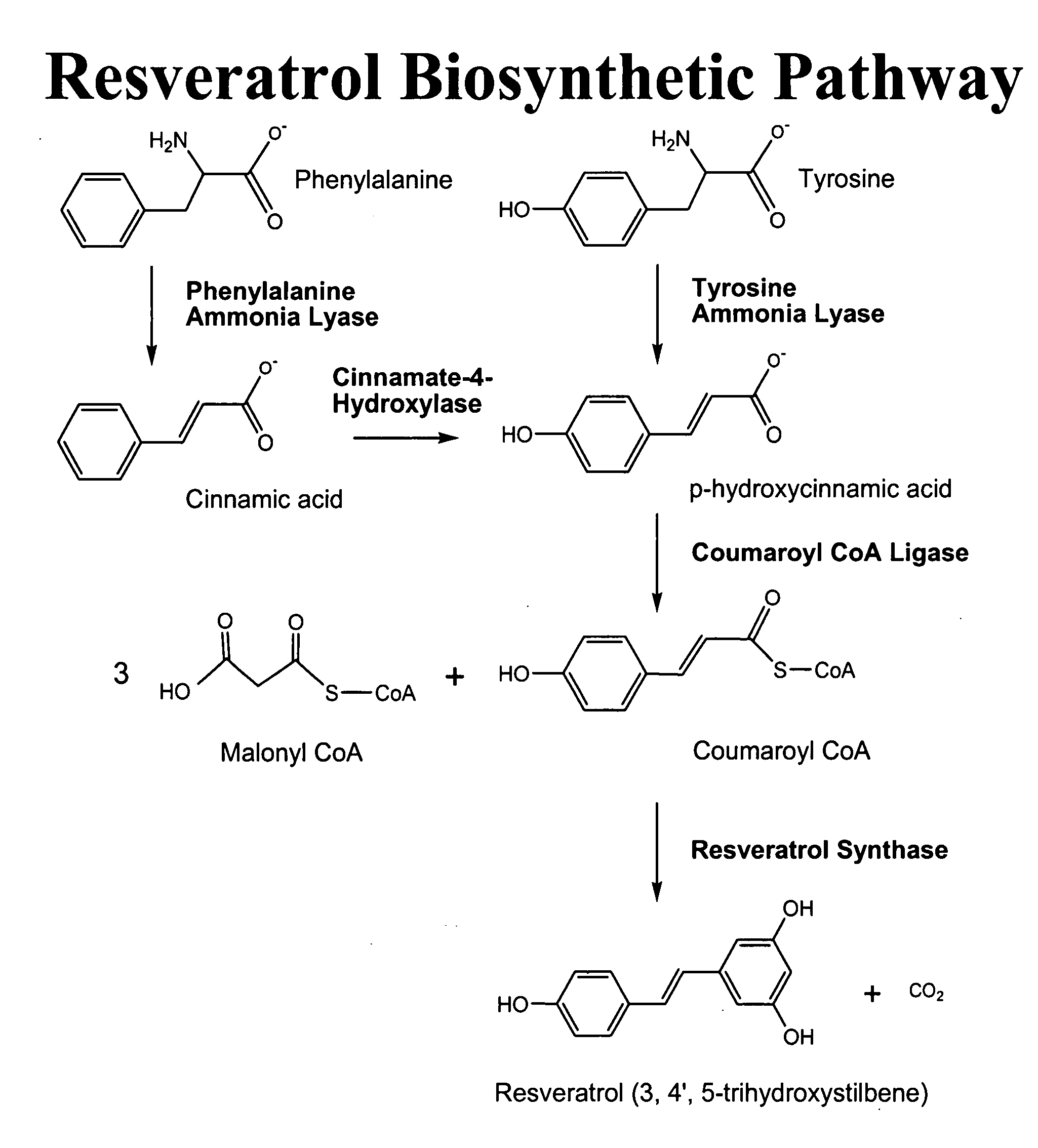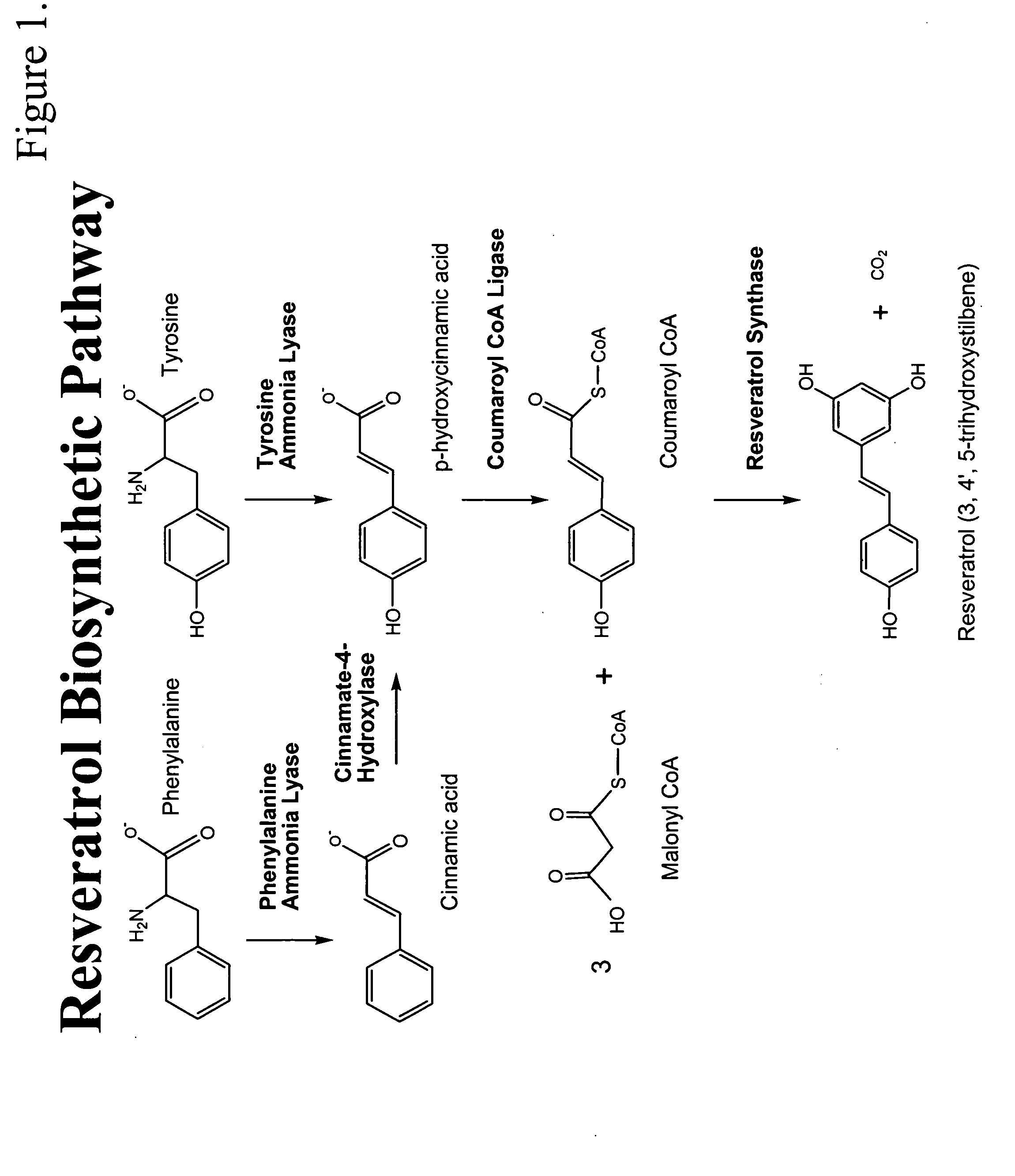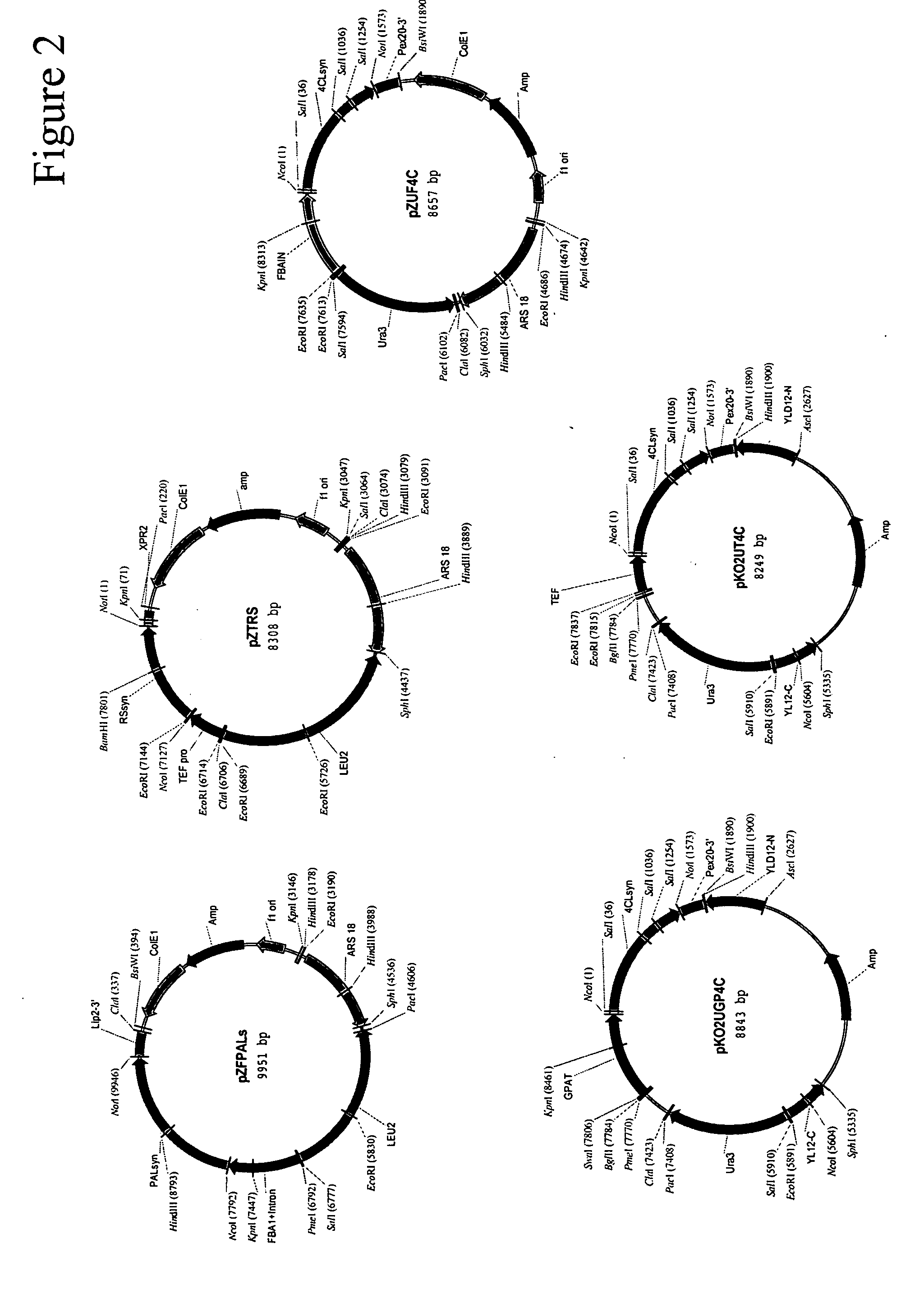Method for the production of resveratrol in a recombinant oleaginous microorganism
a technology of resveratrol and oleaginous bacteria, which is applied in the field of molecular biology and microorganism production, can solve the problems of inefficient, difficult, and expensive means of producing resveratrol by chemical synthesis
- Summary
- Abstract
- Description
- Claims
- Application Information
AI Technical Summary
Benefits of technology
Problems solved by technology
Method used
Image
Examples
example 1
Determining the Preferred Codon Usage in Yarrowia lipolytica
[0345]Approximately 100 genes of Yarrowia lipolytica were found in the National Center for Biotechnology Information public database. The coding regions of these genes, comprising 121,167 bp, were translated by the EditSEQ program of DNAStar to the corresponding 40,389 amino acids and were tabulated to determine the Y. lipolytica codon usage profile shown in Table 2. The column titled “No.” refers to the number of times a given codon encodes a particular amino acid in the sample of 40,389 amino acids. The column titled “%” refers to the frequency that a given codon encodes a particular amino acid. Entries shown in bold text represent the codons favored in Yarrowia lipolytica.
TABLE 2Codon Usage in Yarrowia lipolyticaAminoCodonAcidNo.%GCAAla (A)35911.4GCGAla (A)2568.1AGAArg (R)26313.2AGGArg (R)914.6CGCArg (R)1085.4CGGArg (R)2091.0CGUArg (R)1899.5AAUAns (N)25516.0GAUAsp (D)79533.2UGCCys (C)26853.2UGUCys (C)23646.8CAAGln (Q)307...
example 2
Design of A Codon-optimized Phenylalanine Ammonia Lyase Gene
[0347]The phenylalanine ammonia lyase gene of Rhodotorula glutinis (SEQ ID NO:1-2) is 2151 bp in length (GenBank® Accession No: X12702). As with other phenylalanine ammonia lyases, the enzyme encoded by the phenylalanine ammonia lyase gene also has tyrosine ammonia lyase activity, converting tyrosine into pHCA. A codon-optimized phenylalanine ammonia lyase gene was designed, based on the R. glutinis DNA sequence, according to the Yarrowia codon usage pattern, the consensus sequence around the ATG translation initiation codon, and the general rules of RNA stability (Guhaniyogi, G. and J. Brewer, Gene, 265(1-2):11-23 (2001)). In addition to modifying the translation initiation site, 357 bp of the 2151 bp coding region corresponding to 342 codons were also codon-optimized. The GC content was reduced from 64.8% of the wild type coding region to 56.4% of the codon optimized coding region (SED ID NO: 3) of the phenylalanine ammon...
example 3
Design of A Codon-optimized Coumaroyl CoA Ligase Gene
[0349]The coumaroyl CoA ligase gene of Streptomyces coelicolor (SEQ ID NOs:4-5) is 1569 bp in length (GenBank® Accession No: AL939119). A codon-optimized coumaroyl CoA ligase gene was designed, based on the Streptomyces DNA sequence, according to the Yarrowia codon usage pattern, the consensus sequence around the ATG translation initiation codon, and the general rules of RNA stability (Guhaniyogi, G. and J. Brewer, supra). In addition to modifying the translation initiation site, 278 bp of the 1569 bp coding region corresponding to 260 codons were also codon-optimized. The GC content was reduced from 72.7% of the wild type coding region to 59% of the codon optimized coding region (SED ID NO. 6) of the coumaroyl CoA ligase gene. None of the modifications in the codon-optimized gene changed the amino acid sequence of the encoded protein (SEQ ID NO:5), except the first codon from GTG (SEQ ID NO: 4) to ATG (SEQ ID NO. 6). The codon op...
PUM
| Property | Measurement | Unit |
|---|---|---|
| temperature | aaaaa | aaaaa |
| temperature | aaaaa | aaaaa |
| temperature | aaaaa | aaaaa |
Abstract
Description
Claims
Application Information
 Login to View More
Login to View More - R&D
- Intellectual Property
- Life Sciences
- Materials
- Tech Scout
- Unparalleled Data Quality
- Higher Quality Content
- 60% Fewer Hallucinations
Browse by: Latest US Patents, China's latest patents, Technical Efficacy Thesaurus, Application Domain, Technology Topic, Popular Technical Reports.
© 2025 PatSnap. All rights reserved.Legal|Privacy policy|Modern Slavery Act Transparency Statement|Sitemap|About US| Contact US: help@patsnap.com



